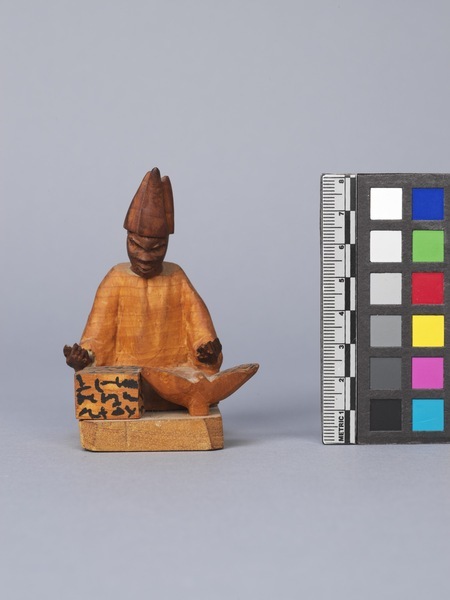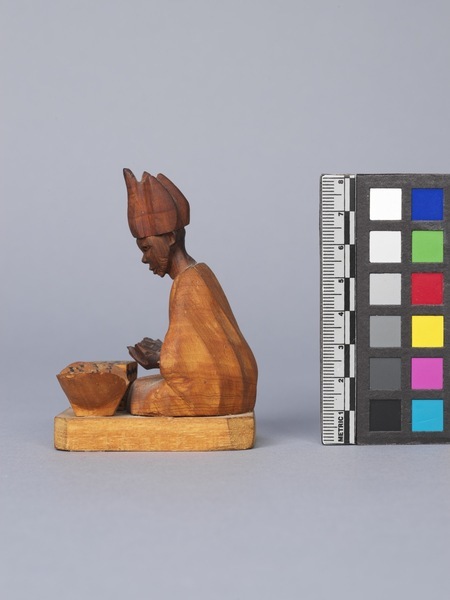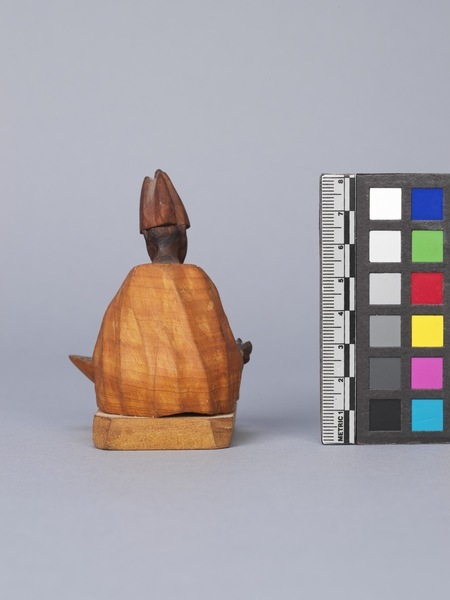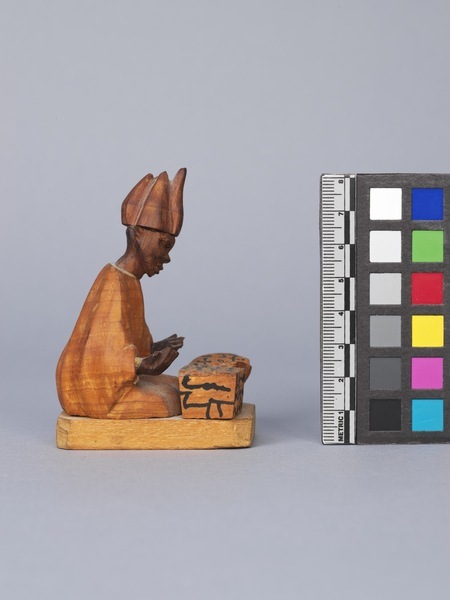Thorn Carving Item Number: 3326/39 from the MOA: University of British Columbia




Description
Thorn carving depicting a seated figure praying with a book open and a block with writing on all sides. The figure wears a long robe, and a tall pointed hat. They hold their hands out in front of them. Figure adhered to a rectangular pressed board base.
History Of Use
Thorn carvings are miniatures depicting a variety of scenes from Nigerian life. The carvings first began to be made circa 1930. The thorns vary in size; they can be as large as 12.7 cm long and 9.6 cm wide. The thorn wood is comparatively soft and easy to carve; they are traditionally carved by men.
Narrative
Most of the Nigerian objects in the Lieber collection were assumed to have been collected while Jack Lieber was living in Nigeria, 1965-1970. However one of the thorn carvings was made after 1971, so the dates are uncertain.
Cultural Context
craft; tourist art
Specific Techniques
The light yellow-brown thorn and the dark brown thorn come from the ata tree; the light red-brown thorn comes from egun trees. The parts are glued together with viscous paste made that was made from rice cooked with water.
Item History
- Made in Ibadan, Nigeria ? during 1970
- Owned by Jack Lieber before 2015
- Owned by Iris Lieber before June 18, 2018
- Received from Iris Lieber (Donor) on June 18, 2018
What
- Name
- Thorn Carving
- Identification Number
- 3326/39
- Type of Item
- carving
- Material
- atum thorn, egun thorn, adhesive and wood
- Overall
- height 8.5 cm, width 5.5 cm, depth 6.0 cm
Who
- Culture
- Yoruba
- Previous Owner
- Jack Lieber and Iris Lieber
- Received from
- Iris Lieber (Donor)
Where
- Holding Institution
- MOA: University of British Columbia
- Made in
- Ibadan, Nigeria ?
When
- Creation Date
- during 1970
- Ownership Date
- before 2015 and before June 18, 2018
- Acquisition Date
- on June 18, 2018
Other
- Item Classes
- carvings & sculpture
- Condition
- good
- Accession Number
- 3326/0039